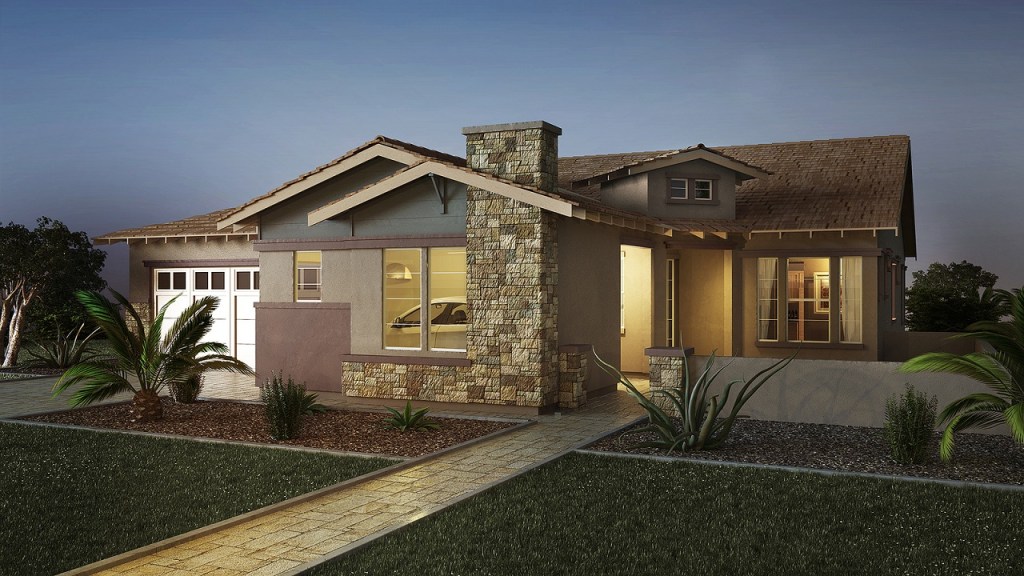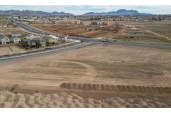Markets across the country realized big gains in home sales last year due in part to steady economic growth, low mortgage interest rates, and a deeper buyer pool. In Phoenix, not so long ago an epicenter of the housing crash, the market was much like the weather there: hot. According to Metrostudy data, the Phoenix market posted a 14% gain in sales volume and an 8.8% rate of price appreciation year over year in the fourth quarter of 2016.
For Shea Homes Arizona, the fourth quarter delivered a 22% year-over-year increase in sales.
Ken Peterson, vice president of sales and marketing for Shea Homes Arizona, credits the success to a few factors—some the Arizona division controls and some it doesn’t. With respect to the latter, the final months of 2016 saw a flurry of buyers looking to close on a home before interest rates increased, which happened in mid-December. “We had a bunch of buyers in the market trying to buy inventory homes and close by year-end in order to take advantage of below-4% interest rates,” Peterson notes.
In the first part of 2016, “we saw homes sitting on the market for an average of 95 days, and toward the end of the year, that dropped down to 78 days,” he says.
The product most Phoenix buyers want, Peterson says, is a single-level home around 2,150 square feet. In November and December, 95% of the division’s sales were single-story homes.
In response to this demand, Shea Homes Arizona is opening an entire single-story community for the first time ever. The Reserves, a gated community in Gilbert, Ariz., will feature four single-level floor plans that will range from roughly 3,200 to 4,000 square feet and include three to five bedrooms and up to four and a half bathrooms.
The division is also designing three new single-story product lines that will go into its Gateway Quarter community in Queen Creek, Ariz., next year.
“We’ve just had such success with single-level homes right around that square footage range that we said let’s build an entire community with single-level homes and see how the market responds,” Peterson says.
Although The Reserves will have no age restriction, Shea Homes’ Trilogy line is built and designed for the active adult demographic. While The Reserves is a traditional Shea Homes community, the division has four active Trilogy communities.
Consumer Shift
The demographics have shifted for Shea Homes. Peterson estimates that before 2014, the division’s home buyers were 70% baby boomers. Now, millennials and Gen Xers make up 70% of its buyers.
“Boomers made their big move after the downturn of the market and the slight recovery, and now you’re seeing millennials getting jobs more established and their desire to move into their own a home,” Peterson says, noting that part of the draw to buy now is low interest rates.

Ken Peterson, vice president of sales and marketing, Shea Homes Arizona
With rates expected to rise more in 2017, he adds, buyers are looking to lock in current rates.
Despite reports to the contrary, which Peterson calls “bogus,” millennials don’t want to rent or live in urban centers forever. “That makes sense when you’re single or married without children,” he says, “[but] our buyers coming into our communities want to have their own backyard and a place for their kids to play.”
Bumpy Landing
Where those prospective homeowners will eventually live is a big part of Dave Garcia’s job. As vice president of land acquisition and development for Shea Homes Arizona, Garcia spends a lot of time planning where the division’s next community will pop up.
Like in most markets, there’s heavy competition for land in Phoenix, Garcia says. Nearly all of the prime spots have been secured, so now he’s concentrating elsewhere.
“You’re still focusing on A and B locations, but chances are you’re going to have to buy raw land, take it through entitlements, and construct it,” he explains. “The finished lot inventory has just about gone away, with the exception of some of the outlying areas where there’s still an abundant supply of finished lots to choose from, but that’s not a market that we’re pursuing at this point.”
Land prices are at or slightly above the peak prices before the downturn, Garcia adds, but home prices aren’t all the way back. “Land’s at a premium, [but] we’re not getting premium pricing yet on housing,” he says.
Because there are many builders looking for land, those selling the land can be difficult in negotiation. “The land sellers are reading the papers, and they’re seeing the same thing we’re seeing—that the activity is picking up, consumer confidence is improving—so they’re asking more for their land,” Garcia says. “But what they’re not seeing is our inability to raise prices because the market is still in the beginning stages of recovery, and our direct costs have gone up considerably over the last 18 months.”
Shea Homes Arizona routinely walks away from land deals for that reason. Garcia, who has been with the company for 17 years, says when he first started “you might look at three deals to find one. Now you have to look at 10 to 15.”
Strong Signals
Land costs are up, but Peterson and Garcia still say it’s a great time to be a builder in Phoenix. Metrostudy data shows job growth of 3.1% in 2016, and its forecast expects it to “modestly accelerate” this year.
“The greater Phoenix market will become increasingly under supplied, but also over valued in year 2017,” says Metrostudy chief economist Mark Boud. “Because of strong demand, new-home sales will increase in 2017 from 2016 levels, though price-sensitivity will increase as costs continue to rise.”
According to Peterson, Shea Homes Arizona will open 11 communities this year and deliver about 400 homes. The year will serve as a retooling one in preparation for 2018 and 2019, he adds, as the division delivered about 950 homes in 2016 and expects to cross the 1,000 mark in 2018.
“We don’t desire to be the largest builder,” he says. “We desire to be the best builder.”



